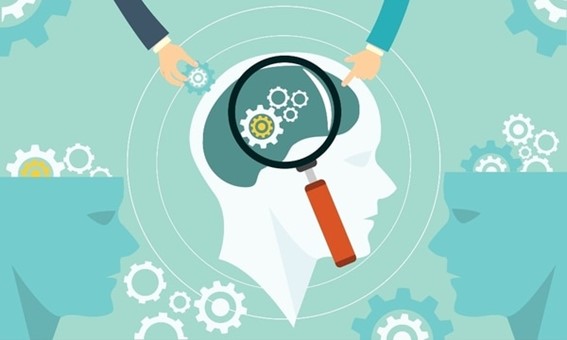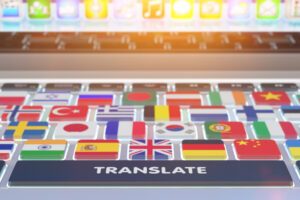Note: This blog post was originally written in Japanese for our Japanese website. We used our machine translation platform Translation Designer to translate it and post-edit the content in English. The original Japanese post can be found here.
As a spin-off of our popular blog series of Machine Translation Vs. Human Translation, we're going to discuss on how to make good use of both machine translation and human translation by combining them. So, this post is rather about the two complementing each other.
In the previous posts, we focused on the advantages and disadvantages of each method. This time, we would like to change that perspective a little and discuss about how you can improve the QCD (quality, cost, and delivery) performance in translation work by combining machine translation and human translation.
| For those who missed it, check out the series here: Machine Translation Vs. Human Translation Part 1: Are We Being Replaced? Machine Translation Vs. Human Translation Part 2: When Are They Effective? Machine Translation Vs. Human Translation Extra Edition 1 |

The new standard is the mix of TM, MT, and PE
Before we dive into discussing the translation workflow that mix machine translation and human translation, let's go over the definition of terms.
| Translation memory (TM): Data in which past translations are accumulated in a bilingual form. Machine translation (MT): Translations done by machine translation engines, i.e., AI-powered translation. Post-editing (PE): Revising the translation output of machine translation manually. |
Now, let's talk about the workflow, which is pretty simple.
You will work with a CAT tool and use a translation memory as a reference, reusing your past translations for similar sentences. For new or mostly new sentences or words, you will apply machine translation. After applying machine translation, you will be post-editing the output. This is a method aiming to efficiently proceed with your translation work while improving the QCD.
OK, we just mentioned that this workflow would improve the QCD performance, but let's be more specific. Using a translation memory not only complements the quality of machine translation but also leads to taking off the cost and workload of your translation work along with shortening the turnaround time. Of course, nothing is perfect. That's why we're going over both the advantages and disadvantages.
Advantages of the mix of TM, MT, and PE
The following are the three main points of the advantages of this workflow.

1. Optimizing the QCD
The first point is that you can optimize the QCD as already explained above. It is worth mentioning that using a translation memory is often effective when you're translating something like manuals, which often have a standard format or similar content. However, you should be aware that it really depends on your material.
2. Integrating with various CAT tools
The second point is that you can integrate this workflow with various computer-assisted translation (CAT) tools. Some of the major CAT tools are SDL Trados Studio, memoQ, and Memsource.
3. Working with data that include tags
The third point is that by integrating with CAT tools, you can work with data that include tags such as HTML and XML files. Usually, machine translation is not suitable for translating these kinds of files because it will also translate inside of the tags, which should not be modified. Since CAT tools can identify tags and leave them out of scope for machine translation, integrating with CAT tools opens the door to utilizing machine translation even with data that include tags.
Disadvantages of the mix of TM, MT, and PE
Next, let's look at the disadvantages of this workflow. Again, we will focus on three main points.

1. Using CAT tools is a must
The first point is that, after all, you have to use a CAT tool to make this method possible. But why is this a disadvantage? It's because you need to pay a license fee to use CAT tools. If you don't translate a large number of documents on a daily basis, it is most likely to be overwhelming.
Don't be disappointed though. Even if you don't have access to a CAT tool, there is a way to achieve this workflow. If you work with translation companies like us and have been receiving translation memories for your deliverables, then this workflow is possible.
In addition, even in the worst case where you don't have a translation memory, translation companies can easily create one for you from your past translation projects. If you have many documents with highly similar content and want to utilize machine translation in the future, we recommend that you create a translation memory and start using this workflow.
2. Maintaining a TM at a good enough quality
The second point is that you have to maintain your translation memory at a good enough quality to make this workflow effective. If the quality of your translation memory is bad, that quality will be reflected in all of your translations in the future. Meaning, those translations will be useless, and you'll have to make revisions or redo the translation.
3. Affecting the overall quality of your TM
Finally, the third point is that by taking this method, it might deteriorate the quality of your translation memory. This workflow incorporates machine translation (MT) with post-editing (PE) in which linguists make revisions to the machine translation output. There is most likely to be a difference in quality with other translated sentences based on your translation memory.

The workflow of mixing TM, MT, and PE that we shared here is not the only way of utilizing machine translation. But it's a great example to understand the advantages and disadvantages of the method. By combining the knowledge of machine translation and human translation that we shared in previous posts, we're hopeful that everyone will be able to successfully incorporate machine translation into their daily translation work.
Kawamura's translation services
Demand for machine translation with post-editing (MTPE) services is increasing more and more. With MTPE services, we make the best use of machine translation output to provide cost effective translations. MTPE services provide a preferable quality to our customers by adding the extra editing work to the quick and low-cost machine translation solution. Although, we must say that machine translation with post-editing is not suitable for all contents and documents.
Yet centering around localization, marketing translation and mass media translation work pretty well with post-editing. With the evolution and development of machine translation engines, the skills required of post-editors are gradually changing as well. We definitely have to keep an eye on the trends in machine translation and post-editing.
Kawamura has been taking on machine translation with post-editing projects from early days. Our post-editing service is backed by the knowledge gained from numerous projects and our experienced post-editors. We have professional post-editors who we can rely on for delivering accurate Japanese translation. Moreover, we can assign native-speaking post-editors for other Asian languages, European languages, and more. Every year, we are getting more and more requests for post-editing services in many languages, not limited to just English and Japanese.
Let us offer you various solutions for any kind of requests or issues you have. Feel free to reach out to us for a quote or if you have any questions.
_CMYK_OL.png)


